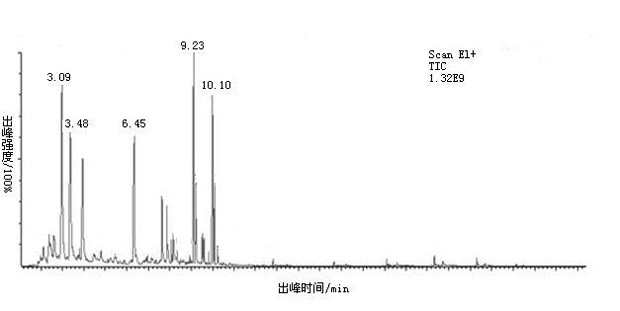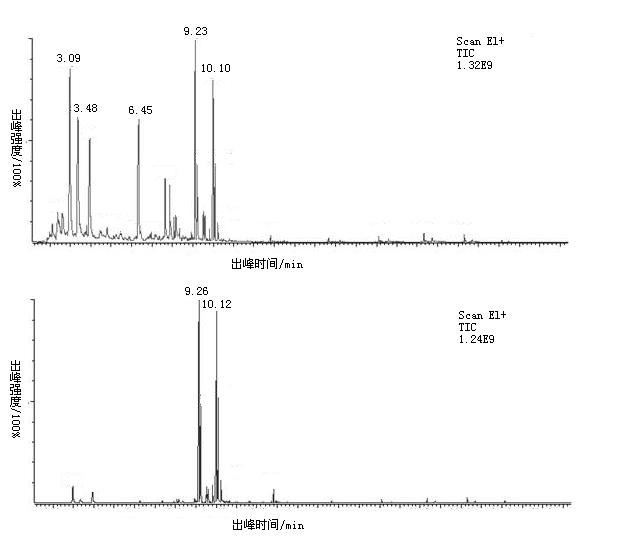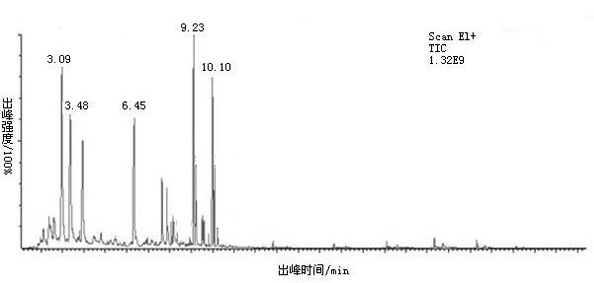Low-odor polypropylene composite and preparation method thereof
A polypropylene composition and low-odor technology are applied in the field of low-odor polypropylene composition and its preparation, and achieve the effects of good mechanical properties, simple preparation process, and inhibition of polypropylene decomposition
- Summary
- Abstract
- Description
- Claims
- Application Information
AI Technical Summary
Problems solved by technology
Method used
Image
Examples
preparation example Construction
[0065] The preparation method of the odor inhibitor: clay, zeolite, and metal oxides are activated in a muffle furnace at 500-600°C for 2 hours, taken out and placed in an odorless oven at 100°C to cool for later use.
[0066] For the same modified polypropylene formulation system, we prepared Comparative Examples 1-5 and Example 1 to investigate the ability of the odor control composition to absorb odor substances.
[0067] We investigated the change of odor by investigating the ratio and addition amount of different odor control compositions in Comparative Examples 6-8 and Example 2.
[0068] Since the types and contents of odor substances contained in different modified polypropylene formulation systems are different, we conduct investigations through Example 2 and Example 3.
[0069] Compared before and after adding the odor composition, although after adding suitable composition and suitable proportioning, the odor is obviously reduced, but it should be understood that th...
Embodiment 1
[0091] Table 6 formula content
[0092] components
Manufacturer
weight percentage
PP
Sinopec, Singapore Polyolefin
69%
POE
Mitsui
10%
talcum powder
Heshan Chemical Group
19%
odor suppressant
self made
1%
anti aging agent
Ciba
1%
[0093] In this scheme, the odor inhibitor is a clay and zeolite composition, and their weight percentages in the odor inhibitor are: clay 30%, zeolite 70%. Among them, SiO in clay 2 / Al 2 o 3 The molar ratio is 135, and the zeolite is a zeolite with a large surface area, and the specific surface area is 150~350m 2 / gr, the pore diameter is less than or equal to 1 nanometer, and the zeolite is a hydrophilic zeolite. The above raw materials were first put into a high-speed mixer with a rotation speed of about 1000 rpm and mixed for 3 minutes. See Comparative Example 1 for the extrusion granulation process.
[0094] The sample properties that comparative e...
Embodiment 2
[0113] Table 11 Formula content
[0114] components
Manufacturer
weight percentage
PP
Sinopec, Singapore Polyolefin
75%
POE
Mitsui
7%
talcum powder
Heshan Chemical Group
13%
odor suppressant
self made
4%
anti aging agent
Ciba
1%
[0115] In this solution, the odor inhibitor is clay, zeolite, and metal oxide composition, and their weight percentages in the odor inhibitor are: clay 25%, zeolite 50%, and metal oxide 25%, wherein the metal oxide is calcium oxide. Among them, SiO in clay 2 / Al 2 o 3 The ratio is 135, and the zeolite is a zeolite with a large surface area, and its specific surface area is 150~350m 2 / gr, the pore diameter is less than or equal to 1 nm. The above raw materials were first put into a high-speed mixer with a rotation speed of about 1000 rpm and mixed for 3 minutes. See Comparative Example 1 for the extrusion granulation process. The properties of Comparati...
PUM
| Property | Measurement | Unit |
|---|---|---|
| pore size | aaaaa | aaaaa |
| pore size | aaaaa | aaaaa |
| melt flow index | aaaaa | aaaaa |
Abstract
Description
Claims
Application Information
 Login to View More
Login to View More - R&D
- Intellectual Property
- Life Sciences
- Materials
- Tech Scout
- Unparalleled Data Quality
- Higher Quality Content
- 60% Fewer Hallucinations
Browse by: Latest US Patents, China's latest patents, Technical Efficacy Thesaurus, Application Domain, Technology Topic, Popular Technical Reports.
© 2025 PatSnap. All rights reserved.Legal|Privacy policy|Modern Slavery Act Transparency Statement|Sitemap|About US| Contact US: help@patsnap.com



